As sometimes you want to be in a pine forest and breathe clean and healthy air filled with phytoncides.
Trees of coniferous breeds are one of the most popular and ideal objects for planting the site. In addition, their presence next to your home brings and enormous benefits - kills all the microbes nearby and clean the air. Unlike the usual pines and spruce, the fir is more slim and lush. Not in vain it is called the queen among conifers. Plant Fir near your home - it means to give the area of \u200b\u200bsophistication and beauty at any time of the year. At the same time, the process of growing this beautiful tree does not cause big difficulties with you.
In this article, we will look at the main characteristics and description of the wonderful representative of pine - fir. We note the main features of the species and varieties of this tree, as well as tell about the nuances of agrotechnology of cultivation.
Characteristics and description of fir
Fir is an evergreen plant, which belongs to a large family of pine. Fir tree is distributed in different latitudes: in moderate, subtropical and tropical. The natural habitat of this coniferous tree is the territory of Eastern and Central Europe, East and Central Asia, the Far East and Siberia, in some areas of North America and North Africa.
Fir is a very decorative plant that does not lose its needle painting even in winter. This tree is very highlighted from the total mass of coniferous trees - its cones grow vertically and resemble beautiful and original candles.
Many confuse fir with ordinary fir. However, between these two representatives of the Pine Family there are many differences. One of them - the fir of the needles is very soft and does not ourselves. Fichte received its name from the German word, which in the translation denotes "fir". That is why many often call both wood fir.
Fir Description:
- Like pine, spruce, fir larch belongs to the coniferous rocks of a large family of pine.
- Fir is an evergreen plant that can reach different heights. Of the 50 types of fir, you can meet the low plants of 50 cm in height, and the real giants come across - up to 80 m. Very high trees are growing only in nature. For use in landscape design, the grades of small-sized fir are predominantly choose.
- This is a monocoa plant, which is shadowed, but poorly grows in conditions of strong cold weather.
- Fir roots are very long, go deep into the ground. Root system rod.
- The trunk of the tree is covered with thin gray crust, smooth to the touch. This is characteristic of young fir. With age, the bark becomes thicker, it cracks. In diameter, the trunk can reach 50-400 cm.
- A distinctive feature of fir from other conifers is that her crown begins at the very reason, practically touching the Earth.
- Cone cones shape.
- The branches on the trunk are located almost horizontally and thickly covered with cheese.
- The needles of the fir consists of soft, flat needles that are narrowed at the base.
- Fir has male and female flowers. Male are earrings from shishchek, and women's - egg-shaped or cylindrical cones that grow vertically up.
- Inside the cones are seeds.
- Fir can be polled by the wind.
- This tree is a long-liver. In one place with proper care is able to live to 300 years.
- Unlike many other representatives of the family, it does not endure the rank of air, so it does not fit the landing in cities near active roads.
A variety of types and varieties of fir
Fir is a rather capricious plant, however, there are varieties that are popular with landscape designers in Russia and other countries. Let's look more in more detail their features and the most common varieties.
Balsamic fir
North America is considered to be the birthplace of this type of fir, where this tree grows in large quantities. Perfectly feels in the shade and pretty steadily tolerates frost. In height can reach 15-25 m, the barrel is smooth and straight. Thick can reach almost 1 m in diameter. The borses in the balsamic fir of greenish-purple color, in the form of egg-shaped or spherical. In length can reach 5-10 cm. As the ripening becomes brown. Green needles 1.5-3 cm long.
Popular varieties:
- Fir balsamic "Nana". The dwarf shape of the fir of this species, height can reach only 50 cm. Crown grows up to 2.5 m in diameter. The branches are arranged horizontally, thickly covered with a short cheese of green. Needles from the bottom have a slightly yellowish tint.
- Fir balsamic "Hudsonia". Also is a dwarf form of fir. It has a wide and empty crown, which is formed by numerous branches and short escapes. Needles are short, from the top they are black and green, and from the bottom - bluish-green.
Fir Korean
The homeland of this type of fir is the territory of the Korean Peninsula, hence the name. Perfectly feels on the elevation. In nature can grow in pure fir forests or mixed. In height, this tree can reach 5-15 m. Depending on the age of the tree, the trunk is covered with ash or chestnut bore. In diameter, the trunk can reach 80 cm. Crown is quite wide, in the form of cone-shaped. Crown is formed by branches that are located layers. The branches are covered with a sufficient thick cheese. The needles are slightly curved, tough, the color is dark green, the bottom is slightly silver. The bumps reach 7 cm long, have a beautiful purple color. Fir Korean is a popular view in Russia.
Popular Korean Fir Sorts:
- Sort "Piccolo". This is the dwarf form of Korean fir, heights only 30 cm. Excellent suitable for landscaping stony gardens, terraces. Crown is very thick and spread, can grow to 1.5 m in diameter. The needles are also thick, tough, two-color.
- Variety "Blue Standard". The crown of this fir has a spherical shape that is formed by a hay of a marsh-green color. The needles are larger.
Fir Siberian
This type of fir is found in nature only in Siberia. Russia is a guarded view. Landscape design rarely used. This tree in height reaches 30 m. Crown is a narrow pyramidal form. The needles are slightly lowered down. The needles are narrow and soft, short length - only 3 cm. The bumps are also small, only 5-8 cm. In the form of cylindrical.
Single-color fir
The natural area of \u200b\u200bthe habitat of this type of fir is the territory of North America. Greens up a sufficiently high tree - it can reach 60 m. The trunk is quite powerful and thick, in diameter is about 2 m. Crown in the form of cone-shaped, is formed sufficiently thick cheese. The painting of the needles can change, from blue to grayish-green, the needles of the fir can become a yellowish shade in the fall. This type of fir is one of the most unpretentious, perfectly puts drought and can carry frosts with shelter.
Popular varieties:
- Violacea variety. The tree has a small size - in a height of only 6-8 m. Crown is distinguished by a wide cone-shaped form. Red-blue needles. It is a rather rare form of monochrome fir.
- grade "Compact". It is a dwarf shape with blue needles.
Fir Caucasian or Nordmann
The natural habitat of this type of fir is the territory of the Caucasus and Turkey. In height can reach 60 m, the thickness of the barrel - 2 m. The needles are sufficiently dense, slightly omitted to the ground. The color of the needles are dark green, the bottom has a slightly silver shade.
Fir white or kidnapped
In nature grows in the mountains of the Far East, North China. Pretty slim tree up to 30 m in height. The crown shape can be a cone-shaped or pyramidal. The needles are thick, dark green. This species is quite hardy, can grow in urban conditions, winter articles.
In addition to the above-mentioned types of fir, the following are also found: Fir Vicha, Picht Mayra, Sakhalin Fir, Picht Subalpian, Fish Soliste and others.
Methods of breeding fir
Fir can be diluted independently, the main thing is to know that the seed method is suitable for species forms. And in the case of decorative species, fir needs to use a method of reproduction with cuttings, as the seeds in reproduction, young plants do not inherit maternal signs. Some types of fir can give branches to the earth itself and thus rooted on their own. For example, Siberian fir.
Reproduction of cuttings
- The optimal time for the workpiece of cuttings is the early spring before the start of the sludge. Cut the cuttings in the morning or in the evening.
- The cutting should be 5-7 cm long.
- The main condition - cuttings should only be with young trees with annual shoots, not older.
- It is also important that only one kidney is on the top of each cutter.
- High-quality planting material is a stalk with a heel.
- To get a stalk with a heel, it is better not to cut it, but with a sharp movement to tear off with pieces of the bark.
- Before landing on all cuttings, you need to explore your heels and clean them from various sowing.
- For disinfection of planting material, it must be placed for several hours into a weak solution of manganese.
- Next, prepare a suitable container and fill the soil mixture, which should consist of sand, leaf land and humus.
- The cuttings are rooted in the soil and covered with a film.
- For better rooting cuttings, a pair of degrees is needed above room, so it is desirable to provide the lower heating of the container.
- It is also important to place containers in a bright, but not very sunny place.
- Caring for cuttings is daily ventilation and moisture.
- In the spring, the container can be started to be taken to the air.
- The rooting occurs long, the roots appear only for the second year.
- Fir seedlings grow very slowly for 10 years.
Reproduction of seeds
- Seeds ripen in fir cones, which mature very high, so they are hard to get.
- In addition, during the maturation of the wind as soon as they are carried on the district.
- You need to get a little immature cone and allow to dry.
- Then, remove the seeds.
- Before planting the seeds necessary to be subjected to stratification. To do this, and should be wrapped in a damp cloth and place in the sand. The container in the refrigerator for several months.
- Sow the seeds need to be in April.
- They are usually sown directly into open ground, where before that you need to break a small flower bed.
- Suitable for seeding soil mixture consisting of sand and turf.
- Seeds are sown to a depth of 2 cm.
- Watering is not necessary, bed just covered film.
- The first shoots appear for 3-4 weeks.
- Fir seedlings for the winter must-hide, and you can start planting a permanent place in the next year.
Stages of preparation before planting fir
For a beautiful and healthy tree fir important to prepare thoroughly before planting. The main thing - to take seriously the purchase of planting material, as well as to find the most favorable for proper growth fir place. And do not forget to prepare the ground well before the landing.
Selection of seedlings
Fir seedlings are best to buy in specialty stores or nurseries. It is important before buying consult with specialists in the point of sale on more appropriate varieties for planting in your area. Choose the types of fir, which have good winter hardiness. Not worth the risk, buying seedlings of rare decorative shapes with low hardiness, so you can lose the plant in the first year.
When selecting seedlings, carefully inspect it for damage and signs of disease, dry shoots. They must be at least 4 years. The soil in the container should be kept moist and clean.
Also, when selecting planting material Plan the garden song you wish to receive as a result. From the landing site will depend on the particular grade, and thus the size of fir.
Selection of places for landing
Fir any species prefers to grow in a slightly shaded areas, especially in young age. the presence of the shadow is a must for seedlings. It is also important that the site be protected from strong winds.
When choosing a place, focus on the desired result. Fir can land singing on the background of lawn, it also looks good in group landings, as well as for the design of Alley. It must be remembered that the fir does not endure dry air and the presence of great gaspace. Therefore, landing these trees in the city feature and near the highways will not give good results.
Preparation of soil
All types of fih prefer to grow on well-moist, drained and nutrient soils. Perfect soil near reservoirs. It is desirable that the soil is drowned and moderately missed moisture.
Before boarding the site you need to thoroughly switch.
Fakes planting process in open ground
After all the preparatory stages, you can proceed to the process of planting fir.
- The best time for planting fir - April or September. In addition, it is necessary to pick up warm and cloudy days, and ideally with a little rain.
- The landing place must be prepared in advance, about 10-14 days. Drop the landing pits with a depth of 60-80 cm and a width of 60 cm. Dimensions will depend on the dimensions of the root system along with an earth's room. When landing alleys, observe the distance between the seedlings of 4 m, with a group landing - 2.5-3.5 m.
- Further, all pits need to rush to water, approximately 2-3 buckets on one planting well.
- At the bottom it is necessary to place a drainage layer to prevent long-standing stagnation of water in the roots. As a drainage, you can use broken bricks, crushed stone.
- Prepare the soil mixture consisting of humus, clay and sand. Add to it 10 kg of sawdust and 200 grams of fertilizer nitroposki. Fill this hole to the pit to half.
- Two weeks you can start landing.
- Saplings are placed on a holmik. At the same time, you need to be neat with roots, do not damage the earthen com.
- Next, fall asleep the seedlings with a nutrient mixture and gently compact. At the same time, follow the root neck to be on the same level with the garden surface.
- After landing, full of seedlings.
Agrotechnology of growing fir
Fir does not apply to whimsical plants, however, to obtain a beautiful and decorative coniferous wood, you need to try a little.
Watering
Fir are moisture-free plants, but it is also not worth overdoing with watering. It is necessary to find a golden middle. The optimal irregular mode is the following frequency - for young seedlings 1 time in 2 weeks. It is better to use such a way of watering as sprinkling. When the tree is rooted, it is necessary to water only in the most arid periods.
Loosening and mulching
Fir Care includes regular loosening of the priority circle. It is recommended to neatly loose the soil at a depth of about 10-12 cm. At the same time, be sure to remove weeds. Young seedlings need to periodically add a layer 5-6 cm of dry mulch to prevent excessive evaporation of moisture and the formation of peel on the soil. As a mulch, use dry sowers, peat or bark of trees. It is important that the mulch does not fall asleep the root tree of the tree.
Podchar
Fir loves to grow on fertile and rich nutrients soils. Fertilizer will be needed only two years after landing. In the spring time, in front of the period of active vegetation, add 100 grams of Kemira into the rolling circle of each plant. And then swipe it with water. The feeding should be held at least once a year. You can also re-enter fertilizer, but in the fall. Use mineral fertilizers for this.
Pruning and shelter for the winter
Fir do not like them when they are disturbed by transplants and trimming. However, sanitary trimming can be spent in spring until the downstream. During this trimming neat garden scissors, remove damaged and dry branches. Fir has a beautiful and compact crown, which practically does not need its formation, especially in the first 10 years. However, in the intensive need to spring, it is possible to trigger the shoots no more than a third.
Most fir-growing fir-grown in our territory are winter-hardy, but young plants are still better to strengthen the plant on the winter. At the same time, the rolling circle should be sprinkled with a layer of peat.
Fighting diseases and pests
Fir is sufficiently resistant to the emergence of various pests and diseases, and with due care, this risk can be minimized.
Pest pests:
- Erovo-fir hurmes. This pest causes the yellowing of the needles and fir shoots. To combat it, you need to use special drugs - insecticides, for example, Rogor. Treatment need to be carried out in spring.
- Fir mole. To combat this pest, the insecticides of the type of ryra or antio are also used.
Fir diseases:
- Rust. This is the most common and serious illness, with the appearance of which you will have to remove all damaged places and burn them, and all the plant is treated with a bordrian liquid solution.
Using fir in medicine and landscape design
- Fir is used to prepare essential oils.
- Used in cosmetology. It has been proven that fir oils increase skin elasticity and a common appearance.
- It is widely used in medicine during asthma, inflammation of the lungs, angina and influenza.
- With the help of fir oils, various procedures can be carried out: inhalation, bullshit.
- Fir is also very in demand for landscape design.
- More tall varieties are suitable for large squares and parks. However, in the urban trait, these plants suffer very much.
- Landscape designers prefer dwarf forms and low fir forms.
- And use for decoration of alpinarias, rocky gardens.
- Also, the fir can be used to create alley, alive hedges and for group landings.
Stock Foto Fir in landscape design
More clearly see the features of the use of fir in landscaping the site can be on the photos proposed below.
Using fir in group landing:
Fir in landscape design:
Planting fir near the reservoir:
Fir is the queen among all coniferous trees, which attracts attention to his bright appearance. She, as if christmas fir with candles, will become the central decoration of any plot.

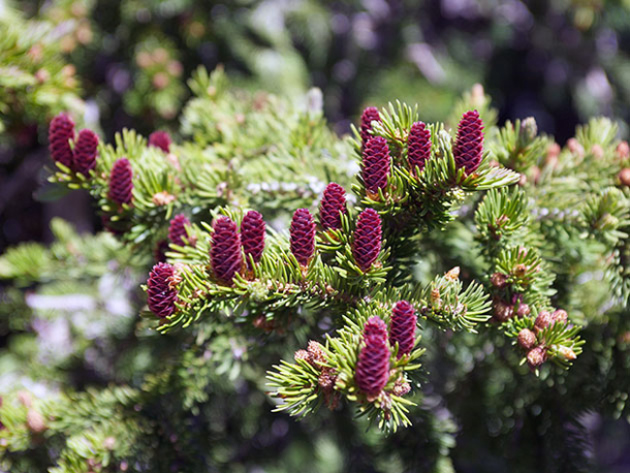

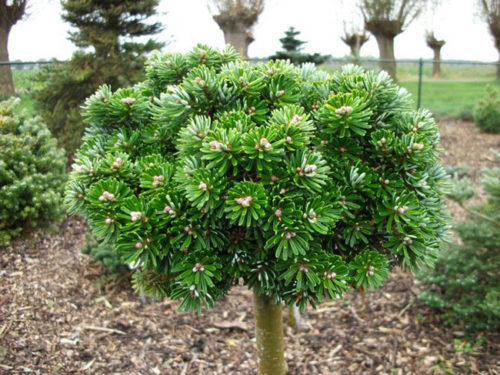
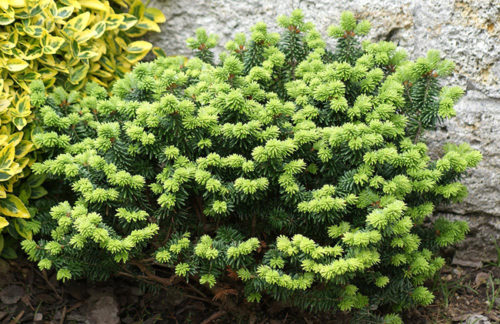
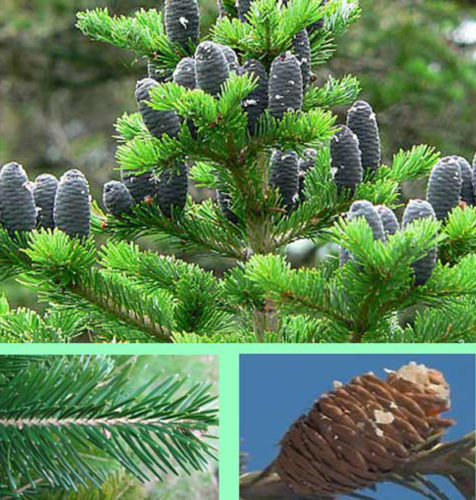
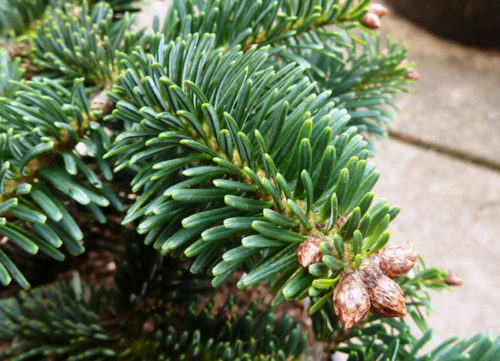

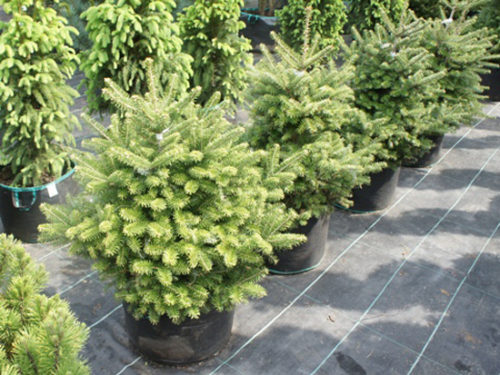
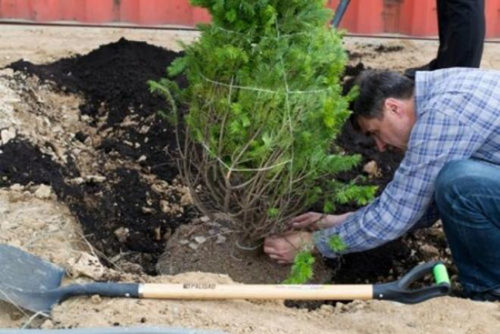
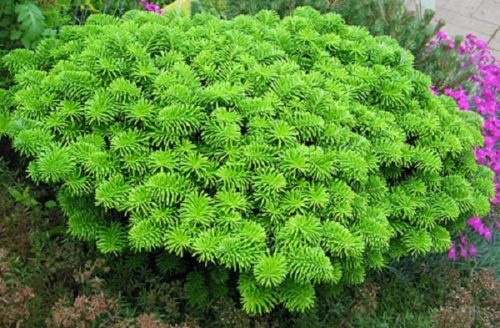
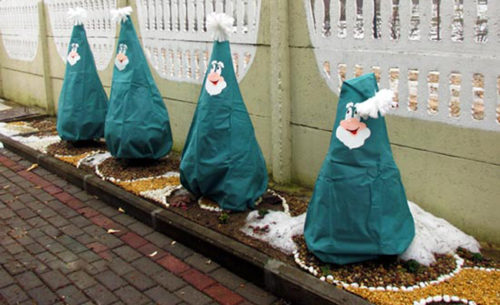
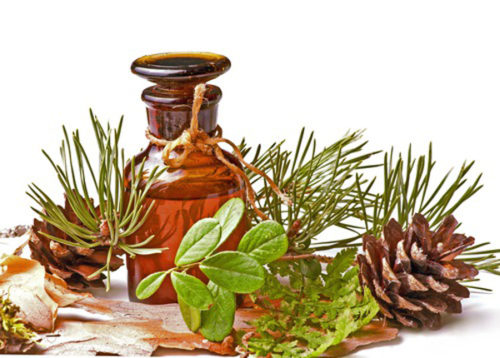
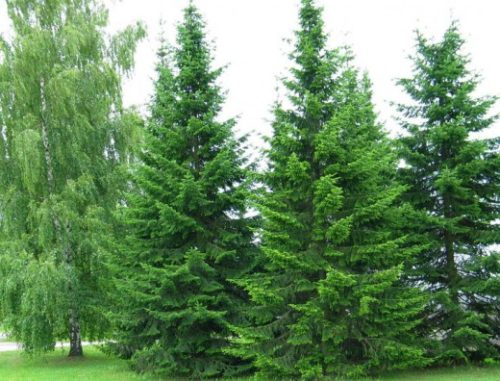
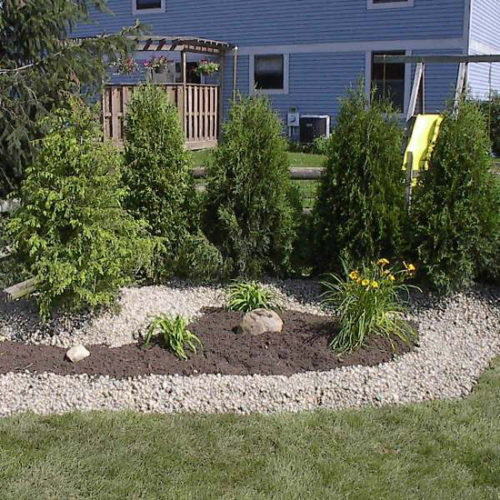
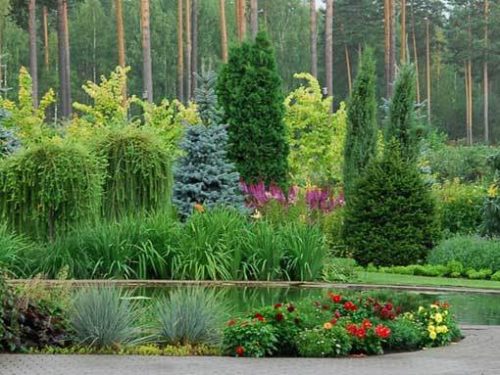












 Start a discussion ...
Start a discussion ...